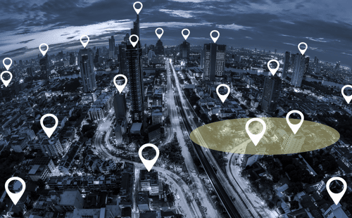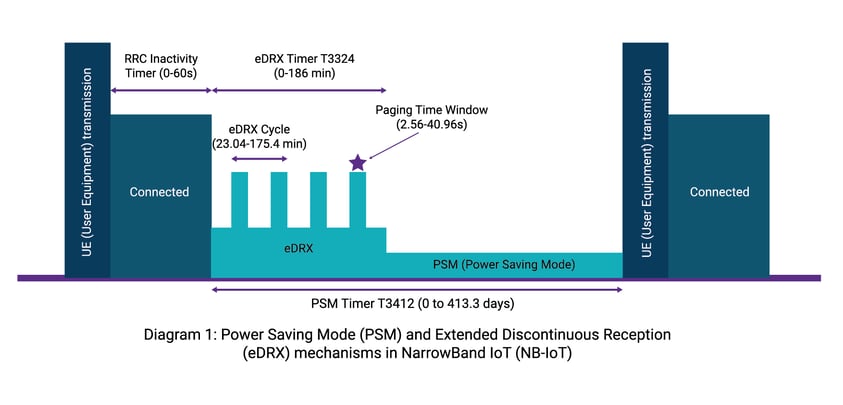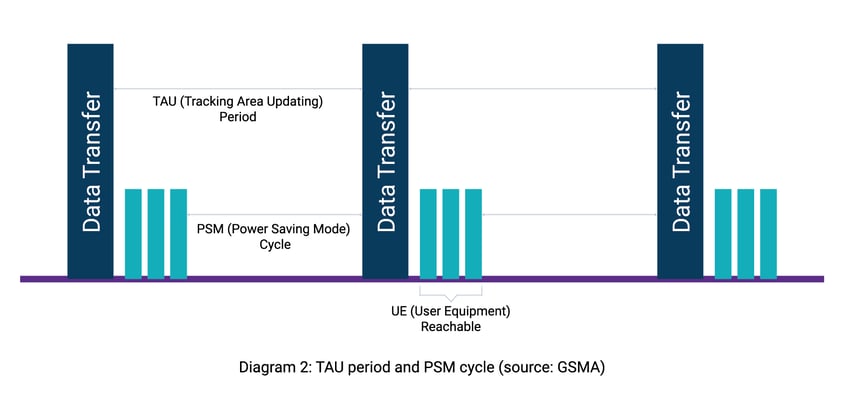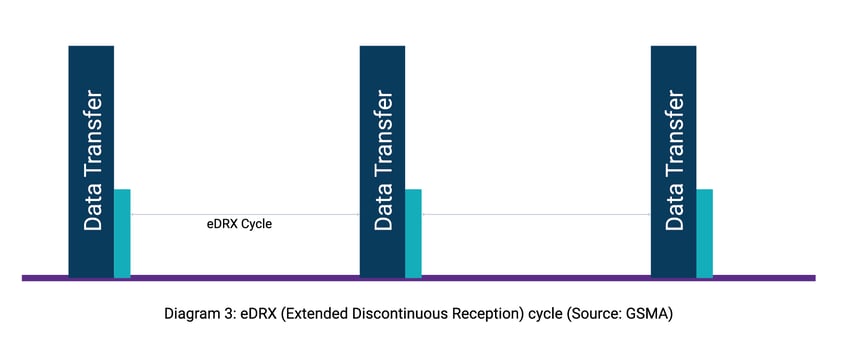

What are PSM and eDRX features in LTE-M and NB-IoT?
One of the main challenges of IoT is keeping deployed devices powered. Traditional cellular networks are designed around personal computing devices, which the user can charge conveniently.
There is rarely an analogous solution within the field of IoT, where you might deploy thousands of devices with little or no regular physical oversight.
Let's explore two potential solutions to this problem, PSM and eDRX, especially within the context of NB-IoT and LTE-M low power wide area network technologies.
What is PSM?
Short for power-saving mode, PSM is a recent feature of cellular networking explicitly designed for IoT devices. As its name implies, it allows idling devices to be placed in a low-power mode, conserving a maximum amount of energy when the IoT device is not in use.
This feature provides a higher level of control over when and how much power is used. PSM is key to keeping energy-related costs low, reducing traffic on a particular network, and lengthening the lifespan of devices.
PSM provides users total control over the feature, allowing them to enable or disable it per their own rules and needs.
What is eDRX?
Similar to PSM, eDRX is a power-saving feature of cellular networks. However, it was created specifically for mobile devices rather than the IoT sector.
What separates eDRX from PSM is when devices are connected to the network. It allows the devices to disconnect and reconnect to the network as needed, reducing time spent roaming. It, in turn, reduces power consumption.
eDRX is a sleep mode that can last for minutes, hours, or even days. Like PSM, it controls the user equipment/devices, allowing them to set the rules and requirements that enable the feature.
Why is extending battery lifetime important for battery-powered sensors?
There are several reasons why PSM and eDRX are essential features for IoT devices, specifically battery-powered devices such as sensors.
First, features that extend the battery life of mobile devices reduce the maintenance demands of these devices. For example, devices will spend less time attached to a charger. As a result, you'll see lower battery replacement costs, and you will reduce the need for physical interaction with these devices.
Second, keeping power consumption low on a cellular network will most often mean keeping the device's use of that network low or completely shut down, which saves valuable bandwidth on the network, keeping it fast and efficient for other users.
Features like PSM and eDRX can save energy and maintenance costs in the long term, which becomes an increasingly valuable selling point as the number of IoT devices increases.
Finally, extending the battery lifetime of a device can increase the lifespan of the device itself. Not all battery-powered sensors and devices will have a replaceable battery, and those that do won't always be deployed in easily accessible locations. Extending the battery's lifespan mitigates these types of challenges.
How does power-saving work with NB-IoT and LTE-M?
Short for narrow-band IoT, NB-IoT networks are inherently low-power cellular connections. They use a cellular channel distinct from 5G and LTE connections, providing a low-power option for IoT devices exclusively. LTE-M and LTE Cat M1 are similar networking options for IoT devices, offering low power by design.
These are low-bandwidth networks, meaning that they only allow the user equipment to send small data packets at a time. However, for IoT devices like sensors, this is all the power they need. It prevents devices from having their batteries drained by networking energy they don't need.

How does PSM work?
PSM is basically "sleep mode" for IoT devices. As a result, IoT devices (particularly sensors) do not need to maintain a full connection to a cellular network around the clock.
Instead, PSM keeps the device in a sleep state most of the time. The device connects to the network periodically to send data, idles to receive data and commands, and then returns to the PSM-induced sleep mode.
How to enable PSM?
Both the network and mobile device need to support this feature to enable PSM. During the Attach or Tracking Area Update procedures, the mobile device activates PSM by negotiating two timers with the network -the T3324 Active Timer and T3412 Extended periodic Tracking Area Update timer. The network may accept these timer values or set new ones. The network can also reject the request entirely if the network does not support PSM. The difference between these two timers is the time a device can remain in Power Saving Mode (T3412 – T3324). See diagram 2 for details.

How does eDRX work?
eDRX handles the idle mode rather than inducing a sleep mode. It allows the end-user to fine-tune when a device enters idle mode, which functions are available in idle mode, and how much energy is used in this mode. eDRX is available on an operator-by-operator basis.
How to enable eDRX?
First, the user device requests the eDRX parameters during the ATTACH and TAU procedures. Then, the mobile network may or may not accept the UE/device's request based on the network configuration. The network can also propose different eDRX parameters to the requested ones. But the device must always apply the parameters transmitted by the network.
Once the device and network have successfully negotiated the eDRX parameters, the network will know when to reach and page the device. During eDRX, any data or messages sent to the device will be queued and delivered to the mobile device when its receiver turns back on.

What are the disadvantages of these features?
While PSM and eDRX can be robust solutions for IoT businesses, there are a few disadvantages. Your operator might not offer either of these technologies. Additionally, PSM devices will be inaccessible at regular intervals, which can be a problem in certain circumstances.
Learn more about low-power IoT solutions with Velos IoT
Velos IoT offers Connect LPWA solution, which deploys your devices on low-power networks to save battery and costs. You can seamlessly swap between your existing 2G modules and future-proof with one of the market's largest Low Power Wide Area networks. Access LTE-M (CAT-M1) and NB-IoT (NB-1) in over 42 countries worldwide and utilise power-saving technology like PSM and eDRX for your devices that need to stay longer in the field.
Reach out to Velos IoT for more information on low-power solutions for your devices today. We can discuss opportunities and solutions for your business using expert knowledge of IoT devices and operator insights.
Alternatively, check out our LPWAN Coverage Map to see where we can have you covered.
Speak to a Velos IoT expert
Related articles


5 benefits of implementing IoT for smart mobility
The recent boom in mobility has largely been spurred by smart mobility. Smart mobility can optimise...

How Does Telematics Insurance Work?
How does telematics insurance work and what are the benefits of a Roaming SIM card? Young drivers...